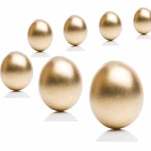
The most common question we get when a family-owned business is considering a transaction to transition ownership to the next generation is, “How much is my business worth?” While that is an important question, we’ve found that the structure of the transaction is more important than the value of the business.
This represents a significant difference between “outside” transactions that occur between the owner and a third party and “inside” transactions that occur between owners or family members. The reason the structure matters so much in “inside” transactions is that the capital used to fund the transaction is often the future earnings of the business, which have not been taxed at the time of the transaction. By contrast, in an “outside” transaction the buyer brings money to the table that has already been taxed.
When we plan internal transactions among family members, everything needs to be evaluated in-after tax dollars from the standpoint of the selling shareholder as well as the company. The biggest issue we face in these transactions is that the company gets no tax deductions for money spent on an equity transaction. Assuming the company’s earnings are the source for funding a family transaction, approximately $1.65 in earnings are needed for every $1 of equity purchased. This makes many transactions burdensome and inefficient from a tax standpoint when they are structured as simple equity transactions.
One of the ways to make a family transaction more efficient is to evaluate whether there is an opportunity to provide a long-term compensation arrangement for the exiting family member in lieu of an outright stock sale. While this may not work in all cases, there are certain instances in which this strategy can have the same monetary effect for the exiting shareholder while allowing the transaction to be completed in a more tax efficient manner, since the compensation payments are tax deductible.
Other parts of the transaction that can be adjusted to make the ends meet include the length of the payout, the use of balloon payments, and interest rates.
We have never completed two family transactions that were the same because each transaction differs depending on the company and the family’s goals. However, one thing we’ve found to be consistent is that when it comes to family transitions, the structure always matters more than the number.

Mario O. Vicari is a director with Kreischer Miller and a specialist for the Center for Private Company Excellence. Contact him at Email.
You may also like:


